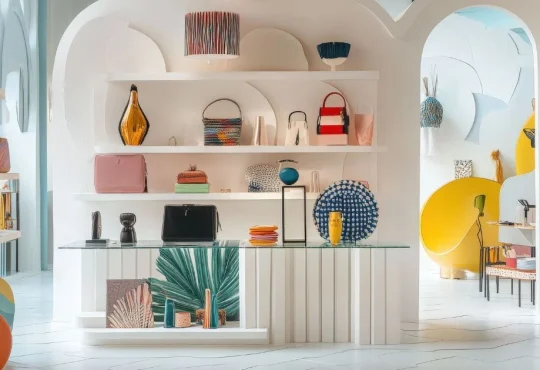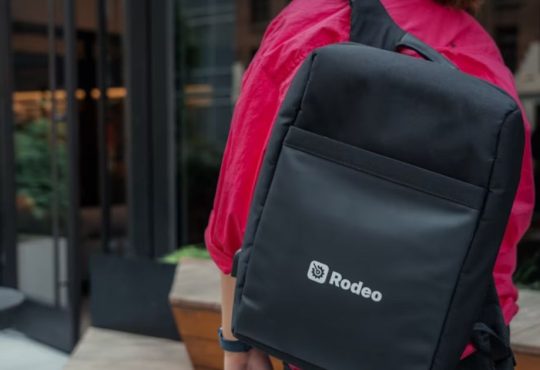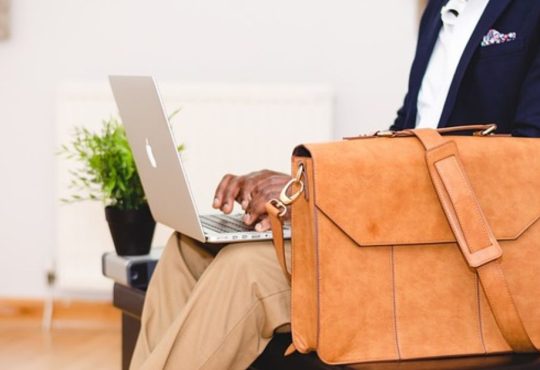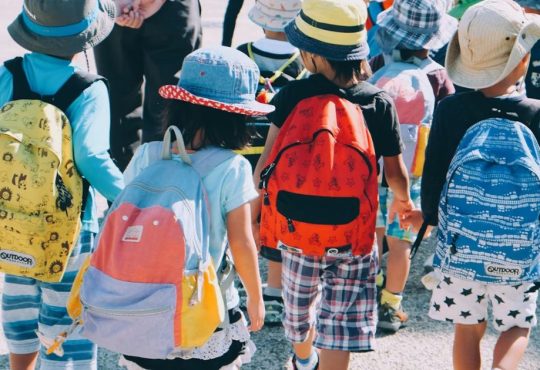The world of luxury handbags is undergoing a remarkable transformation, fueled by changing consumer values, cutting-edge technology, and bold new design ideas. 2025 marks a turning point when sustainability meets groundbreaking innovation, and fearless creativity rewrites what luxury looks like. For anyone passionate about fashion—whether a retailer, designer, or admirer—understanding these evolving trends is essential to staying connected and inspired in the dynamic landscape of high-end accessories.
What’s In for 2025
1. Sustainable and Ethical Luxury
Sustainability in luxury is no longer an optional add-on but a fundamental pillar reshaping how designer bags are conceived, produced, and marketed. As environmental concerns become more urgent globally, luxury brands commit to transparency, ethical sourcing, and eco-friendly innovation.
- Innovative Materials: Designers increasingly use plant-based leathers from cactus fibers, apple waste, and mushroom mycelium. These materials offer the tactile richness of traditional leather while minimizing ecological footprints. Mushroom leather, for example, is biodegradable and requires fewer resources to produce, making it an exciting alternative.
- Circular Fashion Models: Beyond materials, many brands adopt circular economy principles by introducing programs for bag repair, resale, or recycling. These initiatives prolong product life cycles, reduce waste, and encourage consumers to view luxury goods as lasting investments rather than disposable commodities.
- Ethical Labor Practices: Transparency in fair wages and safe working conditions has become fundamental to modern luxury, establishing ethical labor as a key pillar in 2025. Commitment to responsible production now defines the integrity of high-end brands. Increasingly, brands share detailed supply chain information to reassure discerning buyers that their bags are crafted under responsible conditions.
- Consumer Impact: The demographic leading this shift consists of environmentally conscious Millennials and Gen Z consumers, who prioritize values as much as aesthetics when selecting luxury products.
2. Sculptural and Architectural Shapes
In 2025, handbag designs are moving beyond classic, safe shapes to embrace bold styles that challenge traditional forms and expectations. The trend emphasizes sculptural, often avant-garde silhouettes inspired by architecture and contemporary art.
- Geometric Influence: Clean lines, asymmetric shapes, and polygonal structures are prominent, transforming handbags into bold, sculptural statement pieces. These designs highlight exceptional craftsmanship combined with cutting-edge innovation in bag construction.
- Transformable and Modular Designs: Some bags feature modular components, allowing wearers to customize the shape or function according to need. For example, detachable compartments and adjustable designs can transform a tote into a crossbody or clutch, seamlessly blending the lines between different bag styles.
- Materials and Texture Play: Combining rigid materials with soft leathers or fabrics heightens the architectural effect, creating visual and tactile contrast. High-tech molding and 3D printing technologies also facilitate these complex constructions.
- Art Meets Utility: These sculptural bags are crafted to balance dramatic aesthetics with usability, demonstrating that luxury can merge beauty and practicality.
3. Tech-Integrated Handbags
The luxury handbag market is witnessing an infusion of technology that enhances convenience and security without compromising style.
- Built-in Wireless Charging: Some designer bags now feature concealed wireless charging pads to power smartphones or earbuds on the go, reflecting the increasing demand for tech-savvy accessories in a connected world.
- Smart Security Features: Biometric locks—such as fingerprint recognition or face ID sensors—are emerging to protect the contents of handbags from theft or unauthorized access. These innovations redefine bag security standards.
- Interactive Elements: LED displays embedded in handbags enable users to customize colors or patterns digitally, offering personalization at a new level. This trend reflects a broader move toward customizable luxury goods.
- Collaborations: Partnerships between fashion houses and technology companies accelerate the development of smart bags. For example, luxury brands collaborating with startups specializing in wearable tech are pioneering hybrid designs.
4. Mini Bags with a Purpose
While mini bags have long been a staple of luxury fashion, the 2025 iteration emphasizes genuine utility alongside compact size.
- Design Innovation: Featuring expandable sections, detachable coin pouches, and cleverly concealed pockets, these bags seamlessly blend urban practicality with sleek, minimalist elegance.
- Materials and Construction: Lightweight but durable materials ensure comfort and longevity, while craftsmanship ensures even the smallest bags maintain high-end quality.
- Lifestyle Compatibility: Ideal for occasions when carrying essentials only is necessary, such as events, quick errands, or travel, functional mini bags fit into a trend of streamlined living.
- Style Versatility: Mini bags are designed to complement a wide range of outfits, from casual daywear to evening attire, further enhancing their appeal.
5. Vibrant Colors and Bold Patterns
The 2025 handbag palette rejects muted neutrals in favor of vivid, expressive colors and patterns that command attention.
- Color Trends: Electric blues, fiery reds, neon greens, and pastel gradients dominate collections, reflecting cultural shifts toward optimism and bold self-expression.
- Prints and Motifs: Animal prints, oversized florals, graphic stripes, and pop art-inspired imagery appear alongside abstract and geometric designs influenced by streetwear and contemporary art movements.
- Customization: Some brands offer bespoke printing or hand-painted options, allowing consumers to express their style uniquely.
- Cultural Impact: The embrace of color and pattern echoes broader fashion trends, promoting diversity, creativity, and the breaking of traditional fashion rules.
6. Handcrafted Details and Artisan Techniques
In an era dominated by mass production, 2025 luxury handbags emphasize the artisanal with intricate details that celebrate human skill and heritage.
- Embroidery and Beading: Hand-stitched embroidery, beadwork, and sequins add texture and exclusivity, often inspired by cultural motifs worldwide.
- Hand-Painted Finishes: Artists collaborate with designers to apply unique, hand-painted artwork on leather or fabric surfaces, making each bag one-of-a-kind.
- Heritage Craftsmanship: Techniques like weaving, patchwork, and traditional leather tooling are revived and reimagined in contemporary collections.
- Consumer Value: Such artisanal touches signify exclusivity, authenticity, and timelessness, counterbalancing the fast-paced nature of modern fashion.
What’s Out for 2025
1. Overly Large “Mega” Bags
The trend toward oversized, bulky bags that dominated the last decade is diminishing. Functionality and minimalism take precedence over carrying capacity.
- Evolving Rhythms of Daily Life: Today’s consumers gravitate toward sleek, lightweight bags that mirror the fast-paced fluidity of urban living, trading bulk for effortless mobility and modern minimalism.
- Sustainability Considerations: Compact bag designs minimize material use, resonating with a growing commitment to eco-conscious living and responsible fashion.
- Replacement Trends: Sleek, medium-sized totes and smart, multifunctional minis provide a balanced alternative.
2. Excessive Logos and Branding
The logo-heavy trend, characterized by prominent monograms and conspicuous brand insignias, is losing appeal in favor of subtlety and timeless elegance.
- Sophistication over Flash: Brands focus on design quality and craftsmanship rather than overt branding to convey luxury.
- Quiet Branding: Minimalistic logos, discreet embossing, or no visible branding cater to a more discerning clientele.
- Market Dynamics: This shift reflects a maturity in consumer taste, valuing authenticity over status signaling.
3. Synthetic Plastics and Cheap Materials
Bags made from low-quality synthetic plastics or other cheap materials are falling out of favor due to concerns about durability and environmental impact.
- Durability Matters: High-end consumers expect longevity and a premium feel, which cheap materials often cannot deliver.
- Eco Impact: Non-recyclable plastics contribute to pollution, prompting designers to avoid them.
- Material Innovation: Sustainable alternatives, such as recycled fabrics and biodegradable composites, are preferred.
4. Excessive Hardware and Chains
Heavy embellishments, oversized chains, and bulky buckles that once were bold focal points are becoming outdated.
- Weight and Comfort: Large hardware adds unnecessary weight and can reduce comfort.
- Aesthetic Shift: Sleek silhouettes and understated hardware define a refined, versatile elegance that suits modern minimalism and timeless style.
- Innovative Closures: Concealed or seamlessly integrated fastenings replace traditional buckles, offering a cleaner, more streamlined silhouette.
5. Overly Complicated Closures
More user-friendly solutions replace complex zipper arrangements, multiple clasps, and awkward buckles.
- Convenience: Magnetic snaps, intuitive touch closures, and innovative locking systems boost functionality, making daily use effortless and seamless.
- Design Integrity: Simplified closures maintain design coherence without sacrificing security.
- Modern Lifestyles: Fast-paced routines demand bags that offer quick and easy access.
Additional Highlights for 2025
Mixed Materials and Textures
One of the standout trends for 2025 is the creative use of mixed materials and textures in handbag design. The deliberate juxtaposition of contrasting elements—smooth, supple leather paired with airy mesh, intricate woven fabrics, or matte rubberized finishes—adds visual intrigue and tactile richness. These experimental combinations elevate everyday bags into captivating original statement pieces. Beyond aesthetics, some mixed-material designs improve the bag’s durability and functionality, balancing style and practicality. This trend encourages designers to push boundaries and rethink traditional construction methods, resulting in handbags that are as many works of art as reliable accessories.
Gender-Fluid Designs
The rise of gender-neutral fashion continues to influence handbag design in 2025, dismantling the traditional binary divide between male and female accessories. Modern handbags increasingly embrace neutral color palettes—such as muted earth tones, classic blacks, and soft greys—and streamlined shapes that cater to a broad spectrum of consumers regardless of gender. This shift reflects a deeper cultural movement toward inclusivity and self-expression, where personal style transcends conventional norms. By designing versatile and adaptable bags, luxury brands appeal to a broader audience and respond to the evolving ways people identify and express themselves through fashion.
Vintage Revival
Nostalgia plays a defining role in 2025 handbag trends, with iconic styles from past decades reemerging as reimagined essentials in the modern fashion landscape. Iconic silhouettes from the 1970s, 1980s, and 1990s are thoughtfully reinterpreted and updated with contemporary materials, fresh colors, and modern detailing. This vintage revival allows luxury brands to tap into the timeless appeal of heritage designs while ensuring relevance in today’s fashion landscape.
Whether it’s the return of structured box bags, soft hobo shapes, or elegant flap styles, these retro-inspired handbags offer consumers a sense of continuity and connection to the past, combined with modern craftsmanship and innovation. This blend of old and new highlights a broader trend where history and futurism coexist harmoniously in luxury fashion.
The New Era of Luxury Handbags
The luxury handbag landscape of 2025 represents a harmonious blend of forward-thinking innovation and timeless craftsmanship. Sustainability, technological integration, and bold artistic expression dominate the scene, signaling a clear shift in consumer priorities. At the same time, oversized bags, loud branding, and cheap materials gradually fade into the background, replaced by more refined and purposeful designs. Ethical materials, sculptural shapes, innovative technology, functional mini bags, vibrant colors, and artisanal craftsmanship define what is in, while bulky mega bags, overt logos, plastic-heavy construction, excessive hardware, and complicated closures are increasingly out of favor. These trends reflect broader cultural and technological shifts shaping consumer expectations, positioning 2025 as a defining year for the evolution of luxury handbags.





